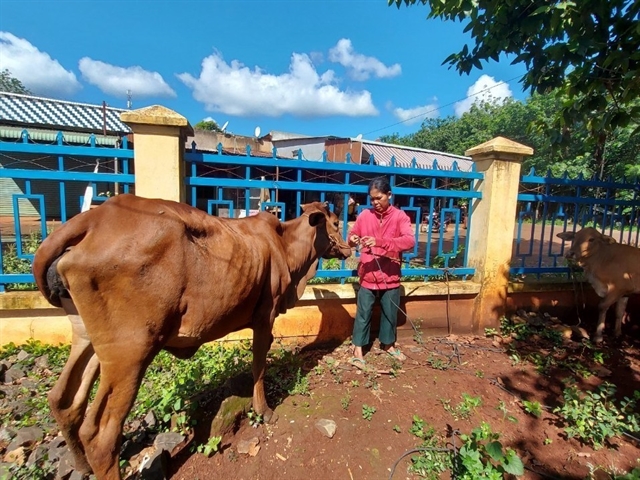 Society
Society

The multidimensional poverty rate in Việt Nam was 4.5 per cent last year, down from 9.9 per cent in 2016, according to the General Statistics Office (GSO).

|
| 30 poor ethnic minority households in the border district of Bù Gia Mập, Bình Phước Province, received livestock under a province's support programme as a mean to help improve the incomes of the impoverished. — VNA/VNS Photo |
HÀ NỘI — The multidimensional poverty rate in Việt Nam was 4.5 per cent last year, down from 9.9 per cent in 2016, according to the General Statistics Office (GSO).
The rate in rural areas is higher than in urban areas, but the gap is reducing gradually.
Multidimensional poverty in 2016-20 in Việt Nam was calculated using data from the Việt Nam Household Living Standard Surveys in 2020 conducted by the GSO in co-operation with the United Nations Development Programme (UNDP).
During 2016-20, the proportion of households deprived of basic social services showed declines year after year in almost all indicators, reflecting Vietnamese households’ better access to services.
In 2020, due to the impact of the COVID-19 pandemic, the downward trend was disrupted in some indicators.
Health insurance, which was the indicator with the highest deprivation, showed the fastest reduction, from 40.6 per cent in 2016 to 19 per cent last year.
Child healthcare and education indicators saw low deprivation levels and remained almost unchanged.
The outcomes also showed high income does not automatically mean good access to basic services, as seen in the Mekong Delta and the southeastern region.
Nguyễn Văn Đoàn, head of the research group, said from 2020, the result of multidimensional poverty calculations in Việt Nam will be announced quarterly, instead of yearly as previously.
Prof. Dr Jonathan Pincus, UNDP Senior Economist, lauded the GSO’s timely release of the report, which, he said, is important to policymaking, especially in the context of COVID-19.
Such detailed and timely information would help to adjust policies, making them match changes from the socio-economic impact of the pandemic, he said.
Multidimensional poverty during 2016-2020 is calculated using the Alkire-Foster methodology, which includes five dimensions (education, health, housing, living condition and accessing ICT) and 10 indicators (adult education level, schooling, accessing health services, health insurance, quality of dwelling, space of dwelling, water source, improved sanitation, assets and ICT access).
Since September 2020, the UNDP has assisted the GSO in improving its capacity for designing and conducting surveys on Vietnamese households’ living standards. — VNS




